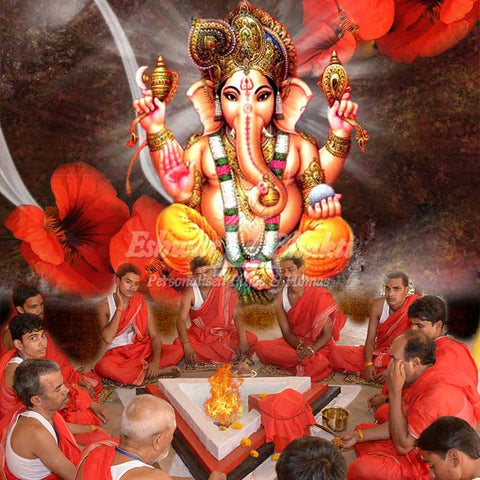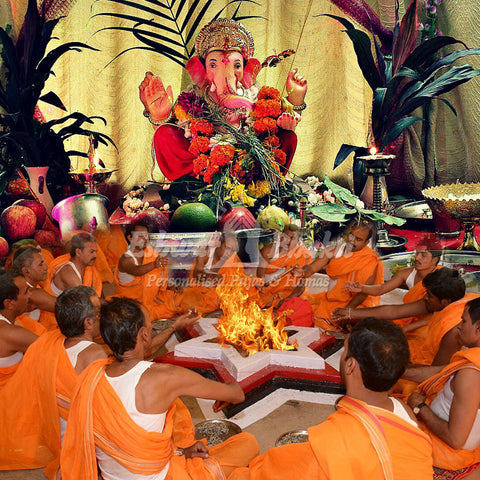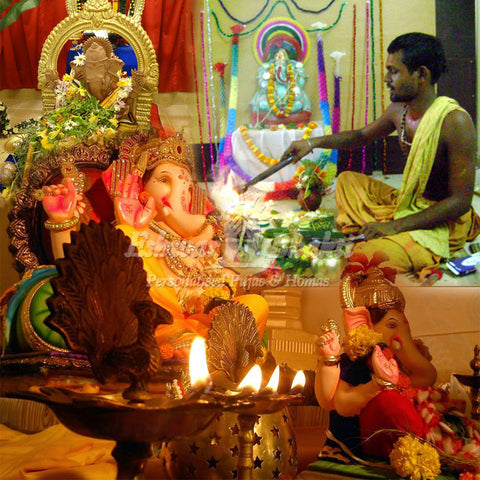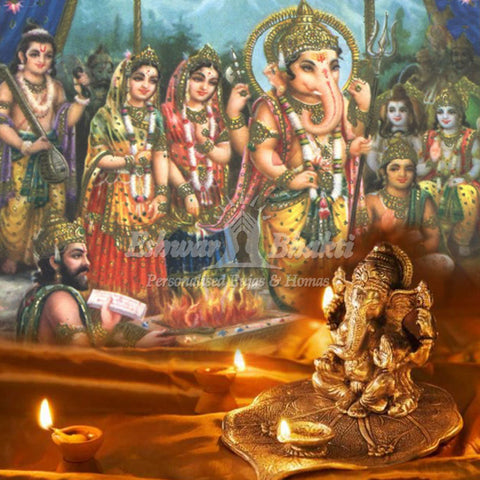Ganesh Chathurthi
Ganesh Chathurthi is celebrated annually with rich fervour on the fourth day of the first fortnight of Bhadrapada month, according to Hindu calendar. This day typically falls closely during August or September month as per the Gregorian calendar. Ganesh Chathurthi is observed as the birthday of Ganesha, son of Siva and Parvathi. Also called as Vinayak Chathurthi, this important festival shall be taken as an opportunity to realize the significance of His peculiar form, name and the proper way to adore the divine principle behind the form of Ganesha.
Lord Ganesha is the bestower of higher intelligence that enables liberation in human life. He provides Siddhi – divine powers, Buddhi – the intellectual power and Mukti – the liberation. Ganesha is also called as Siddhi Vinayaka and Buddhi Vinayaka. They are the powers manifested by Lord Ganesha. Siddhi is attained through intellectual power and wisdom.
Like any other festival of India, importance of Ganesh Chathurthi can be understood only if one looks closely towards its rituals and celebrations. Ganesh Chathurthi celebrations helps us in transforming our inner self. We get to know that there is always a higher goal in life.

Ganesh Chathurthi is a ten days festival during the month of Bhadrapada. It is the sixth month as per the Hindu calendar. It is also called as Ganeshotsava. It concludes on tenth day with Anant Chaturdashi – festival dedicated to Lord Vishnu. It is on this day, Ganesh Visarjan is also performed. Visarjan is immersing the idol of Lord Ganesha in one of the water bodies after a grand devotional procession. Puja offerings to Lord Ganesha starts during madhayhna (mid-day), that is, during the noon. It is believed that Lord Ganesha was born during this time. The placing of Ganesha idol called as Ganapati sthapana is done followed by Shodashopachara Puja.
Ganesh Chaturthi puja is performed for Akhand Sobhgaya Lakshmi (irrevocable fortune, success and wealth) and for accomplishment of Riddhi-Siddhi (prosperity and opulence). Lord Ganesha descends on earth on Ganesh Chaturthi to stay with His devotees for the course for ten days). For 10 days, from Bhadrapad Shudh Chaturthi to the Ananta Chaturdashi, Ganesha is worshipped through this special puja. On the 11th day, the Ganesha idol is immersed in a river or pond symbolizing a ritual see-off of the Lord in his journey towards his abode in Kailash while taking away with Him the misfortunes of the worshipper.
Legend of Ganesh Chathurthi: The story starts with the creation of a clay baby idol by Goddess Parvati, Lord Shiva’s consort. After creating the baby, She breathed life to the idol to make it alive. Goddess Parvati then went for bath. She asked the baby boy to guard the door. He was asked to stop everybody from entering the premises. Then, Lord Shiva came and wanted to enter the premises. He was stopped by the boy. Though He tried to enter with the help of His bhutaganas, it never materialized. Finally in great anger, Lord Shiva beheaded the boy, without knowing about his origin. When Goddess Parvati came to knew about the incident, She became extremely sad and angry. Out of this anger, Goddess Parvati threatened to end the humanity. The story continues saying Lord Shiva consoled His consort by assuring that He will get the baby back to life. He gave instructions to His bhutaganas to get a head of any living creature they sight first. The aim was to use the head of that creature to give back life to the boy. The first living creature they saw was an elephant and its head was attached to boy’s body and He was brought back to life. The boy was named Ganapati means, lord of all the Ganas, the followers of Lord Shiva.
His form is seen as an elephant God, and He is the first to be worshipped in any ritual. In any ceremony, Ganapati is worshipped in the form of Vinayaka – the Lord who removes all misfortunes and obstacles. He is also symbolically seen as the lord of all the divine forces in the human body – externally and internally. His role is to overcome the obstacles called as “vighnams”. He is also considered as the God of knowledge, wisdom, intellect and learning. Lord Ganesha’s divinity is a combination of the powers and characteristics from both Siva and Shakti.
The very story of Ganesha's manifestation holds the essence of Advaita Vedanta. He has been manifested out of the divine essence of (Parvati). This is a reminder that we all are made up of the same, all pervading essence or the spirit though we may vary owing to the disparities in shape and form. Ganesha is the manifested form of the divine. The formless divine is ever present though it takes on a manifestation or a form, owing to our identification of ourselves with a form. Having manifested with a form, the divine also assumes a name due to our association with a form and our wrong notion of separate existence, in order to distinguish ourselves from others. The truth or the essence is but one, the formless spirit that pervades all destroys the disparities. The celebration of Ganesha Chaturti reveals that while we worship the divine with the form, we ought to bear in mind our formless reality. This is depicted in the elaborate worship that is carried out on Ganesha Chaturthi and finally dissolving the form that we endear in a water body in remembrance of the divine as the formless reality even beyond the manifested form.
Celebration of Ganesh Chaturthi: Ganesh Chathurthi is celebrated for 10 days. Devotees bring an idol of Lord Ganesha and place it in a prominent location inside their house, office, or pandal for large gatherings. During these ten days, devotees offer sweets including south Indian payasam, modak, laddu, shrikhand, jalebi, etc. The entire area is decorated in a traditional way. All the offerings are made with great devotion, and daily prayers are offered. Lighting of lamps, incense sticks and decoration with flowers is important during these days. The celebration ends with immersing the Ganesha idol in a water body on Anant Chathurthi (tenth day). Devotees carry the idol by chanting mantras to praise the lord. In some cities, large processions are organised to gather more devotees to make a celebration with rich fervor and great participation. One of the famous slogan chanted is “Ganapati bappa moriya” meaning “Lord Ganesha is mine”. This day is marked as the farewell day to the lord. Devotees strongly believe that their worries and misfortunes are taken away by Him as his idol is immersed in water. They also expect to welcome Him during the same time next year.




